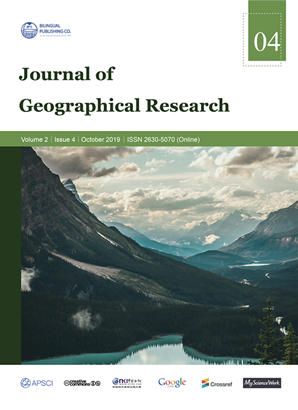-
1362
-
347
-
320
-
235
-
196
Application of UAV in Road Safety in Intelligent Areas
DOI:
https://doi.org/10.30564/jgr.v2i4.1835Abstract
With the continuous development of remote sensing(RS) technology, the surface information can be collected conveniently and quickly by using the popular unmanned aerial vehicle(UAV). The application of UAV low altitude RS technology in road safety in intelligent area has certain practical significance. It can provide safety warning for most drivers, and provide auxiliary decision-making for the road supervision department. Through the collection, processing, calculation and analysis of the road image, the UAV can find out the road obstacles with potential safety hazards, identify the road pit, calculate the radius and depth of the road pit through the digital mapping system, predict the accident risk according to different speed and provide scientific basis for the road safety monitoring. At the same time, UAV can provide repair scheme for damaged roads, estimate the quantity of materials needed for repair, and achieve the target of resource saving and efficiency improvement. The experimental results show that the UAV can not only provide scientific prediction information for driving safety, but also provide relatively accurate material consump tion for road repair.Keywords:
UAV; Low-altitude RS technology; Road safety; Road repair; Road detectionReferences
[1] Xinteng Li, Xiaoyong Chen, Teng Gu, etc.. Comparison of image fusion methods between High Score 1 and Land sat 8[J]. Journal of East China University of Technology (Natural Science Edition), 2017, 40(04): 376-380.
[2] Zhong Cao. Current status and prospects of low altitude unmanned aerial vehicle forest resource investigation and monitoring application[J]. Forestryconstruction, 2016(06): 1-5.
[3] Qiang Chen. Research on traffic accident scene survey technology based on real-virtual target fusion and UAV photography[D]. Jilin University, 2017.
[4] Deren Li, Ming Li. Research progress and application prospects of unmanned aerial vehicle remote sensing system[J]. Journal of Wuhan University (Information Science Edition), 2014, 39 (05): 505-513+540.
[5] Fengxian Li. Application and discussion of UAV technology in remote sensing monitoring of grassland ecology[J]. Survey and Mapping Notice, 2017(07): 99-102+107.
[6] Mingbo Li, Ping Chen, Zhihua Chen. Study on the Key Factors of Rainfall Landslide Disasters in Hunan Province[J]. Journal of East China University of Technology (Natural Science Edition), 2018, 41(01): 36-40.
[7] Luheng, Li Yongshu, He Jing, etc. Acquisition and processing of low-altitude remote sensing image data of unmanned aerial vehicle[J]. Surveying and Mapping Engineering, 2011, 20(01): 51-54.
[8] Zezhong Ma, Fuhai Wang, etc. Application of low-altitude unmanned aerial vehicle remote sensing technology in monitoring landslide and weir Lake disasters in Chengkou, Chongqing[J]. Journal of Soil and Water Conservation, 2011, 25(01): 253-256.
[9] Xinlu Nie, Fei Tang, Qianhong Zhu. Application of UAV remote sensing technology in urban rail transit inspection[J]. Modern urban rail transit, 2017(10): 58-61.
[10] Yifan Pan, Xianfeng Zhang, Child Jubilee, etc. Progress in remote sensing monitoring of highway pavement quality[J]. Journal of Remote Sensing, 2017, 21(05): 796-811.
[11] Guanling Zhang. Application of UAV low altitude photogrammetric system[J]. Engineering technology research, 2017(04): 24+110.
[12] Zhiwei Zhang. Study on monitoring system of straw burning based on low-altitude remote sensing technology[J]. Hubei Agricultural Science, 2016, 55(02): 481-485+500.
Downloads
How to Cite
Issue
Article Type
License
Copyright © 2020 Yanan Xu, Jianxin Qin, Pengcheng He, Zhuan Chen

This is an open access article under the Creative Commons Attribution-NonCommercial 4.0 International (CC BY-NC 4.0) License.




 Yanan Xu
Yanan Xu





